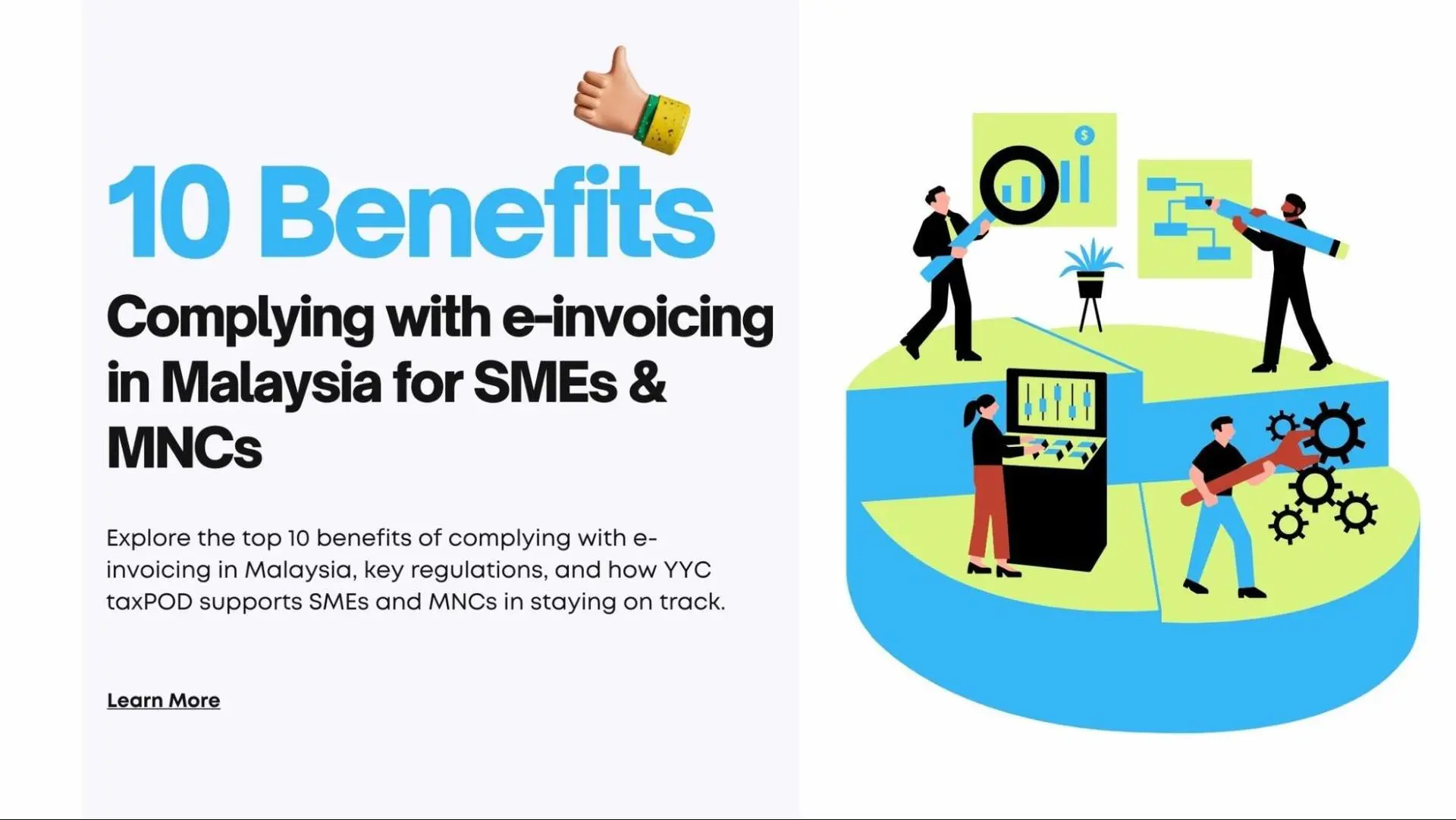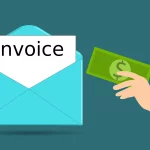What is MyTax and MyInvois Portal Testing Environment?
In recent years, Malaysia has been advancing its digital economy through various initiatives, one of which is the e-invoicing implementation. Starting August 2024, e-invoicing will become mandatory for businesses with an annual turnover exceeding RM100 million, and is now required by law, as mandated by the regulations issued by the Inland Revenue Board of Malaysia (IRB), or Lembaga Hasil Dalam Negeri Malaysia (LHDN / HASiL).
In this article, we delve into the invaluable advantages that come with adhering to Malaysia’s e-invoicing mandate, highlighting the ten key benefits businesses can reap:
What is e-invoicing?
Definition and Explanation of e-invoicing in Malaysia
e-invoicing, refers to the digital generation, submission, sharing, and storage of invoices between businesses, their customers, and LHDN / HASiL. Unlike traditional paper-based invoicing, e-invoicing uses standardized electronic formats that allow for automated processing. This method ensures that invoices are transmitted securely and accurately, minimizing errors and enhancing efficiency.
Overview of Malaysia’s e-invoicing Requirement
Malaysia’s e-invoicing system is part of a broader initiative to digitize and streamline the tax system within the country. The LDHN / HASiL has introduced regulations that mandate the use of e-invoicing for businesses exceeding certain turnover thresholds in phases. This move is designed to improve tax compliance, reduce fraud, and enhance the overall efficiency of the tax system.
Key Regulations and Deadlines for Compliance
The key regulations for e-invoicing in Malaysia include the mandatory use of electronic formats for invoice issuance and compliance with specific standards such as XML or JSON formats. The LHDN / HASiL has also integrated e-invoicing with the MyTax portal, facilitating seamless tax return filing.
The implementation will be phased as follows:
- 1 August 2024: Mandatory for businesses with an annual turnover exceeding RM100 million.
- 1 January 2025: Mandatory for businesses with an annual turnover of more than RM25 million and up to RM100 million.
- 1 July 2025: Mandatory for all other taxpayers.
These deadlines ensure a gradual transition, allowing businesses sufficient time to adapt their systems and processes to comply with the new regulations.
Benefits of Complying with e-invoicing Requirements
1. Improved Efficiency and Reduced Costs
E-invoicing in Malaysia automates the entire invoicing process, from creation to validation and sharing of invoices. This reduces the need for manual data entry and paperwork, resulting in significant cost savings on paper, printing, and postage. The automation also speeds up invoice processing times, leading to faster payments and improved cash flow.
2. Enhanced Compliance and Transparency
By adhering to the e-invoicing regulations set by the LHDN / HASiL, businesses ensure compliance with tax laws as e-invoicing provides a clear audit trail, enhancing transparency and reducing the risk of fraud and non-compliance. Near real-time tracking and validation of invoices further ensure that all financial transactions are accurately recorded and reported.
3. Better Supplier-Customer Relationships
e-invoicing facilitates better communication between suppliers and customers. Digital invoices are easily accessible and reviewable, leading to fewer disputes and improved customer satisfaction. This transparency fosters stronger and more trusting relationships between businesses and their clients.
4. Data Analytics and Insights
The structured data from e-Invoice can be used for data analytics, offering valuable insights into sales, expenses, and overall financial performance of the business. This helps businesses identify trends, make predictions, and optimize their business strategies. Enhanced data analytics capabilities enable businesses to make more informed decisions and improve their overall operational efficiency.
5. Improved Cash Flow Management
By automating the invoicing process, businesses can expedite the approval and payment cycles, resulting in better cash flow management. Faster invoice processing ensures that companies receive payments more quickly, enhancing their liquidity and financial stability.
6. Enhanced Data Security and Accuracy
e-invoicing systems use encryption and secure transmission protocols to protect sensitive financial information from unauthorized access. Automated processes also reduce the likelihood of human error, ensuring higher data accuracy and reliability. This security and accuracy are crucial for maintaining the integrity of financial records.
7. Global Trade Facilitation
Malaysia’s integration with the Pan-European Public Procurement Online (PEPPOL) network as part of its e-invoicing initiative facilitates international trade by standardizing invoicing processes across borders. This makes it easier for Malaysian businesses to trade with international partners, adhering to global standards and ensuring seamless transactions.
8. Grants and Tax Incentives
The Malaysian government provides various grants and tax incentives to support businesses transitioning to e-invoicing. Businesses can apply for digital grants to upgrade their systems, and tax deductions are available for e-invoicing-related expenses. Additionally, capital allowances can be claimed for ICT equipment and software necessary for compliance, easing the financial burden of the transition.
9. Streamlined Financial Operations
e-invoicing reduces the need for manual entry and paperwork, leading to streamlined financial operations. Businesses can reallocate resources to more strategic tasks, improving overall productivity and efficiency. The elimination of manual processes also reduces the chances of errors and discrepancies in financial records.
10. Regulatory Benefits and Support
Compliance with e-invoicing regulations ensures that businesses are prepared for future regulatory changes and requirements on digitalization. The LDHN / HASiL provides guidelines and support to help businesses transition smoothly to e-invoicing implementation. This proactive approach helps businesses stay ahead of regulatory developments and avoid potential penalties.
How to Prepare for e-invoicing in Malaysia
1. Determine Business Turnover
Determine your business turnover based on your 2022 audited financial statements or tax return to identify the date to implement e-invoicing in your company. For businesses with a change in accounting year-end for 2022, turnover or revenue will be prorated to a 12-month period.
2. Conduct a Gap Assessment Analysis
Perform a gap assessment analysis to identify what needs to be done to meet the e-invoicing requirements. This includes evaluating current systems and processes, training staff, and ensuring compatibility of systems with e-invoicing standards. Develop a gap closure strategy with detailed recommendations and action plans.
3. Determine Which Model Suits Your Needs
Choose between using the MyInvois portal or an Application Programming Interface (API) based on your business size and needs. The MyInvois portal is cost-effective for smaller businesses, while APIs are better suited for larger businesses with substantial transaction volumes.
4. Staff Training
Conduct a comprehensive training for staff on the new e-invoicing system. Training should cover the strategic approaches, tax implications, compliance requirements, and effects on existing accounting processes. Continuous training for post-implementation helps in identifying and rectifying errors.
5. Understand the PEPPOL Network
The Malaysian e-invoicing requirement is powered by the Pan-European Public Procurement Online (PEPPOL) network. While not mandatory, using a PEPPOL service provider can ensure effortless compliance, security, and integration.
6. Apply for Grants and Tax Incentives
Utilize available grants and tax incentives provided by the government to support the transition to implement e-invoicing. Businesses can apply for digital grants and receive tax deductions and capital allowances for e-invoicing-related expenses.
How YYC taxPOD Can Help with Implementation of e-invoicing and Tax Compliance
YYC taxPOD, developed by YYC, is a comprehensive online learning platform offering unlimited access to tax-saving knowledge through masterclass videos, live update classes, and webinars. YYC taxPOD is particularly beneficial for SMEs and MNCs in Malaysia as it provides a wealth of resources to ensure tax compliance and optimize tax planning strategies.
Benefits for SMEs
- Cost-Effective Training: SMEs often lack the resources to hire specialized tax professionals. YYC taxPOD offers an affordable alternative by providing comprehensive tax education and updates at a fraction of the cost.
- Up-to-Date Knowledge: Regular live tax update classes and webinars ensure that SMEs stay informed about the latest tax regulations, including e-invoicing requirements.
- Convenient Learning: With access to a wide range of resources, including bite-sized learning videos, live classes, and webinars, YYC taxPOD allows users to learn at their own pace. This flexibility is ideal for busy business owners and finance teams who need to balance multiple responsibilities.
Benefits for MNCs
- Advanced Tax Strategies: MNCs can leverage YYC taxPOD’s advanced tax planning strategies to optimize their tax positions and.
- Comprehensive Coverage: The platform covers a wide range of topics, including transfer pricing, tax audit and investigation, and withholding tax, making it a valuable resource for multinational operations.
- Expert Guidance: With a team of experienced tax professionals, YYC taxPOD provides expert guidance to help MNCs navigate the complexities of tax compliance and e-invoicing.
Explore Our Knowledge Hub!
Discover a wealth of tax-related knowledge at our comprehensive Knowledge Hub. Whether you’re looking for in-depth articles, answers to frequently asked questions, or informative videos, we’ve got you covered. Visit the links below to explore each section:
Enhance your tax knowledge and stay up-to-date with the latest information by visiting our Knowledge Hub today.



